Linda Walton has accepted an offer to become the next Associate University Librarian and Director of the Hardin Library for the Health Sciences effective August 31. Linda comes to the University of Iowa Libraries from the Galter Health Sciences Library at Northwestern University where she has been the Associate Director.
“She has solid experience in health sciences librarianship and plenty of energy,” says Nancy L. Baker, University Librarian. “I am delighted to have Linda join the Libraries’ administrative group and assume leadership of the Hardin Library.”
Linda was attracted to the UI and the Hardin Library primarily because of the commitment to and progressive nature of the University of Iowa Hospitals and Clinics. “The interdisciplinary and collaborative nature of the University shows that the people are truly interested in health care and their patients,” said Walton. “Nancy Baker and the Libraries’ administrative team recognize the unique attributes of a health sciences library and sees this as a plus to the library system as a whole. Working together is critical in this complex information age.”
Some of the challenges Linda sees for all librarians involve understanding the ethical and legal information access issues brought about by the ease of information transfer over the Internet. She also wants to enhance the library user experience by developing tools that help faculty, students, staff and researchers connect with information resources more effectively.
After completing her graduate degree in library science at Indiana University, Linda worked for a small private psychiatric hospital library. This position proved to be the beginning of her career in health science librarianship. She appreciated the structure of health science libraries which allows for networking among libraries, developing library services and programs through grant funding and interlibrary lending. The fast pace of the medical world and being a part of the clinical setting all added to the excitement of being a health sciences librarian for Linda.
Hardin Library for the Health Sciences is part of the University of Iowa Libraries. Hardin serves the combined information and research needs of the five health science colleges of the University of Iowa as well as the University of Iowa Hospitals & Clinics. Each year Hardin also fulfills nearly 30,000 information requests of health professionals across the country. For more information about Hardin Library for the Health Sciences, check online at www.lib.uiowa.edu/hardin.
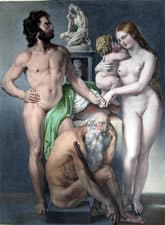
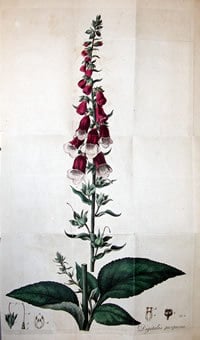
 Although Tagliacozzi was not the first plastic surgeon (it had been practiced in India centuries earlier) he is usually credited as the first modern practitioner of the art. Loss of facial parts from dueling, street fights, and syphilis were common during the 16th century. His work covers the anatomy of the nose and includes sections on the restoration of the nose, lips, and ears by means of autografting; it is replete with stunning engravings illustrating the techniques and instruments used in the various procedures. The popularity of the work caused it to be plagiarized almost immediately. However, Tagliacozzi’s work was opposed on religious grounds by such authorities as Paré and Fallopius and condemned by the church whose authorities exhumed his body and reburied it in unconsecrated ground.
Although Tagliacozzi was not the first plastic surgeon (it had been practiced in India centuries earlier) he is usually credited as the first modern practitioner of the art. Loss of facial parts from dueling, street fights, and syphilis were common during the 16th century. His work covers the anatomy of the nose and includes sections on the restoration of the nose, lips, and ears by means of autografting; it is replete with stunning engravings illustrating the techniques and instruments used in the various procedures. The popularity of the work caused it to be plagiarized almost immediately. However, Tagliacozzi’s work was opposed on religious grounds by such authorities as Paré and Fallopius and condemned by the church whose authorities exhumed his body and reburied it in unconsecrated ground. The practice of attempting to discern personality traits from physical appearance goes back to antiquity. In fact, it was Aristotle who coined the term, “physiognomy” to support his own writings and inclinations on the subject. Since that time and until quite recently, the notion that character and personality are somehow imprinted in facial features has received considerable attention through a variety of approaches, many of which have been used for such nefarious purposes as racial stereotyping and the outright support of bigotry and racial superiority.
The practice of attempting to discern personality traits from physical appearance goes back to antiquity. In fact, it was Aristotle who coined the term, “physiognomy” to support his own writings and inclinations on the subject. Since that time and until quite recently, the notion that character and personality are somehow imprinted in facial features has received considerable attention through a variety of approaches, many of which have been used for such nefarious purposes as racial stereotyping and the outright support of bigotry and racial superiority.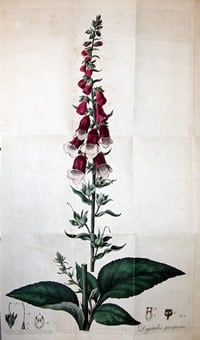 William Withering was a keen observer of plants and their medicinal uses and had already published a widely respected and comprehensive treatise on “Botanical Arrangement of all the vegetables” when this, his most famous work was printed. A graduate of the University of Edinburgh and later appointed an early physician to General Hospital, he noted the success of a complex herbal folk recipe in the treatment of “dropsy” (cardiac edema). Withering isolated the active component as the dried leaf of the foxglove (Digitalis purpura) which had been used indiscriminately (mostly as a diuretic) for centuries. It was Withering’s careful documentation and analysis of his many cases together with his instructions for preparation and dosage that introduced digitalis as a safe drug for a specific purpose. The book was written not only as a directive but as warning against the over-use of the drug which, of course, remains in use today. The exquisite hand-colored illustration of the foxglove plant included in this copy is in near mint condition.
William Withering was a keen observer of plants and their medicinal uses and had already published a widely respected and comprehensive treatise on “Botanical Arrangement of all the vegetables” when this, his most famous work was printed. A graduate of the University of Edinburgh and later appointed an early physician to General Hospital, he noted the success of a complex herbal folk recipe in the treatment of “dropsy” (cardiac edema). Withering isolated the active component as the dried leaf of the foxglove (Digitalis purpura) which had been used indiscriminately (mostly as a diuretic) for centuries. It was Withering’s careful documentation and analysis of his many cases together with his instructions for preparation and dosage that introduced digitalis as a safe drug for a specific purpose. The book was written not only as a directive but as warning against the over-use of the drug which, of course, remains in use today. The exquisite hand-colored illustration of the foxglove plant included in this copy is in near mint condition.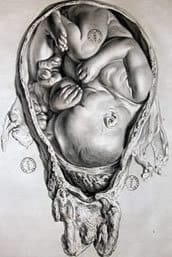
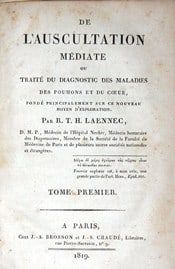 Médiate , Paris, 1819.
Médiate , Paris, 1819.